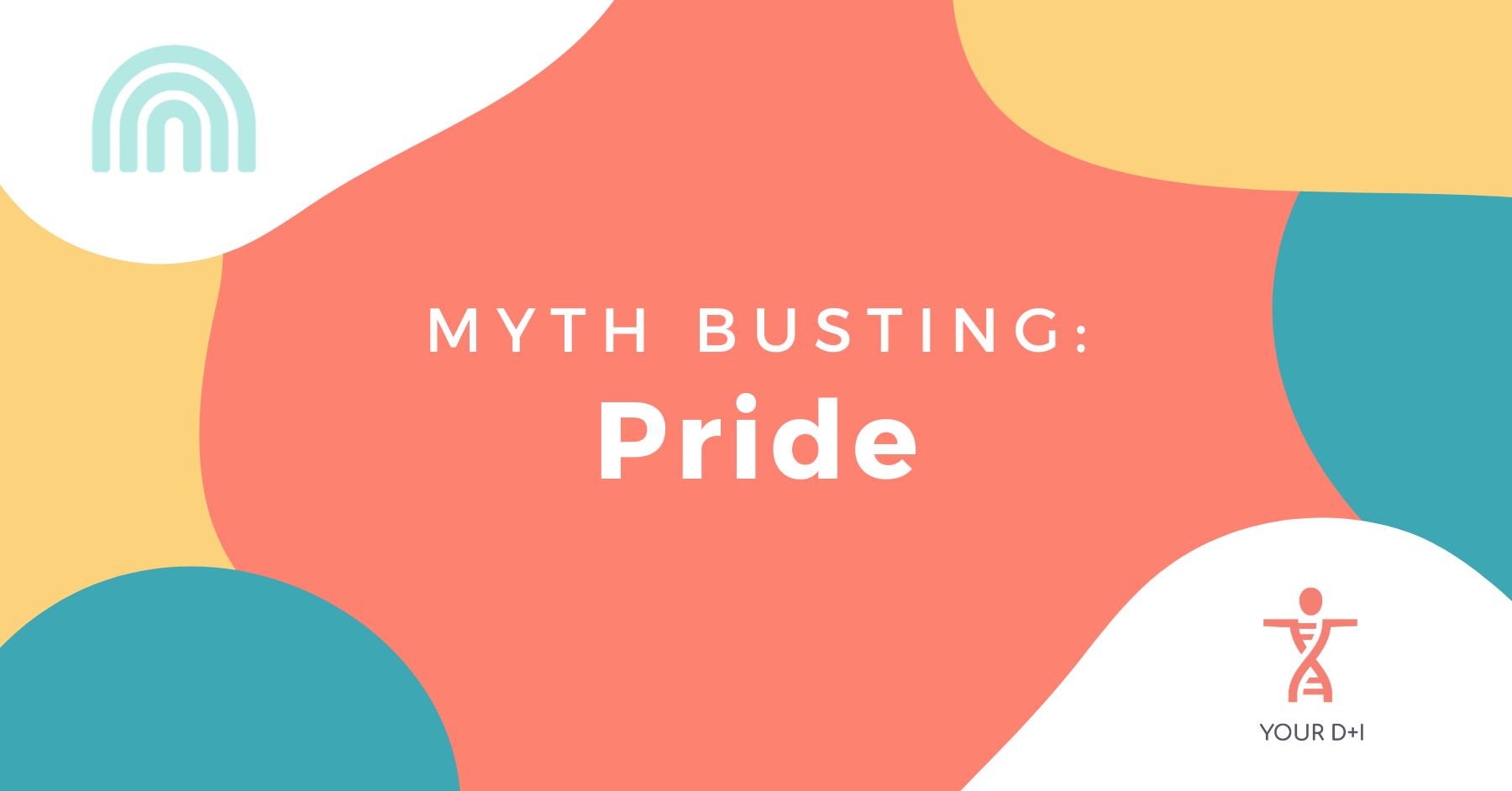Myth Busting: Pride
This LGBT+ History Month, we’re back with another instalment of our Myth Busting: LGBT+ series. For those who are new to the Your D+I blog, this is a series that takes LGBT+ topics and explains the common fallacies that surround them. This makes it great for those still learning about the LGBT+ community. This time, we’re talking all about LGBT+ pride. That includes everything from the pride felt as an LGBT+ person to the specific events held to celebrate it. If you’d like to learn about pride and the myths that surround it, keep reading.
What is LGBT+ pride?
The word ‘pride’ means a feeling of pleasure due to your own achievements or qualities. Though similar, the meaning of ‘pride’ in the context of the LGBT+ community is slightly different. LGBT+ Pride is generally associated with accepting your own LGBT+ identity and the feelings that come with this – whether that is celebration, feeling understood, relief or anything else.
It can also be the feeling of connecting with others in the community (past and present) and celebrating achievements. This can be both personal milestones, such as coming out, and shared milestones, like progress made for LGBT+ rights.
‘Pride’, of course, is also used to refer to LGBT+ pride parades. These annual events usually consist of group marches around the city they are held and usually end in a party. However, pride parades also act as a demonstration for LGBT+ rights, often taking place in June to honour the Stonewall riots.
Now that we’ve briefly covered the meaning of pride, let’s get onto the myths…
‘Pride excludes non-LGBT+ people’
One of the main myths about pride is that it unduly excludes cisgender (non-trans), heterosexual individuals. The first thing to tackle when it comes to this myth is that pride doesn’t, in fact, exclude these individuals. While some do believe that only LGBT+ people should attend pride, this is not the reality for most. Everyone from passionate allies to friends and family who want to support a loved one are welcomed at pride parades worldwide.
As long as you’re coming along to be supportive, anyone is welcome at pride. However, even if this wasn’t the case and pride was an exclusionary event, this would be justified. Pride is one day a year where LGBT+ individuals can feel safe and happy surrounded by people like them. If we can deal with living in a heteronormative society every other day of the year, non-LGBT+ people should be able to deal with one day.
‘LGBT+ pride is selfish – there’s no straight pride’
No, there isn’t. Because what would it celebrate? All of the fights won against heterophobia? How about the courage it took to come out to your friends and family who always assumed you were gay?
There is no straight pride simply because it isn’t needed. Pride allows LGBT+ individuals to celebrate their identities that usually aren’t accepted. And, at the end of the day, the inconveniences that pride causes don’t compare to those experienced by LGBT+ people. Which leads us to the next myth…
‘Pride isn’t needed – LGBT+ people have rights now’
Some argue that pride is no longer needed as LGBT+ individuals have the same rights as heterosexual, cisgender people. This simply isn’t true for two reasons.
One is that LGBT+ people do not have the same rights as their non-LGBT+ counterparts. This map shows just how much of the world LGBT+ people cannot travel to if they want any kind of protection. It also shows the many countries in which they could be killed for their sexuality.
In the UK itself, transgender rights are particularly lacking – with strides backwards even being taken. The fight for LGBT+ rights is far from over, leaving plenty of reason for pride events to continue. This is especially true when the impact of not only legal but also social issues faced by the LGBT+ community is considered. Homophobia and transphobia are still very present in many areas of society – from schools to healthcare.
The second reason this myth is untrue is that LGBT+ people can celebrate their rights even once they already have them. If our rights do match those of non-LGBT+ people one day, the very fact that we had to fight for them gives us a right to celebrate.
‘Pride is just about partying’
Another common fallacy about pride is that it’s just about having a good time. Some believe that pride parades are just a party, which minimises the impact of these events on the welfare of LGBT+ people. In many aspects, pride is a party. But it is a party that brings hope into people’s lives. It is also a party that doubles as a demonstration for current LGBT+ issues.
Those who see the LGBT+ community’s pride as vain partying are missing the point. The celebration is for how far we’ve come and to raise awareness of how far we still have to go. In fact, the origins of pride events go to show how much meaning they truly possess. Additionally, events like LGBT+ History Month allow the community to educate all on the struggles of the past.
The importance of LGBT+ pride
Most of the myths that surround pride fail to see the true importance of pride. While it may look like an exclusionary, unnecessary party to some, pride is a justified and important experience to LGBT+ people. It not only allows the community to reflect on the past but also plan for the future. It empowers us to keep going in a world that would, in many cases, see us give up.
Learning the meaning of LGBT+ topics like pride is key in understanding and supporting the LGBT+ community. This blog post should have provided a bit of insight into LGBT+ experiences and helped you get closer to Diversity + Inclusion.


